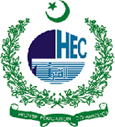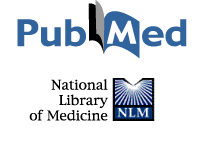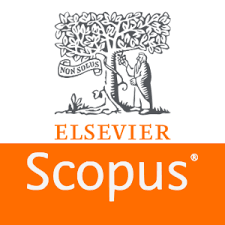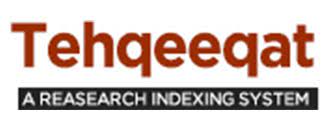EFFECTIVENESS OF CERVICAL LAMINOFORAMINOTOMY FOR UNILATERAL SOFT DISC HERNIATION
DOI:
https://doi.org/10.55519/JAMC-01-13769Keywords:
Cervical disc herniation; QOL; Laminoforaminotomy; Neurological deficitsAbstract
Background: Cervical disc herniation is one of the very few morbid and prevalent spinal conditions affecting quality of life, often leading to debilitating symptoms. Early recognition of signs and symptoms is crucial for timely intervention, as conservative methods may prove insufficient in cases with neurological deficits. Surgical interventions, including anterior and posterior approaches, as well as hybrid approaches, have evolved to address the challenges posed by cervical disc herniation and cervical spondylosis. This study explores the effectiveness of laminoforaminotomy, a targeted surgical approach for unilateral soft disc herniation. The technique aims to achieve optimal clinical outcomes by minimizing disruption to adjacent tissues and preserving motion segments. Methods: A retrospective study was conducted on 23 patients diagnosed with cervical radiculopathy who underwent posterior keyhole laminoforaminotomy between February and July 2023 at a Tertiary Care Hospital in Peshawar, Results: The age distribution of the participants ranged from 32 to 67 years, with the largest group in the 41‒50 age range. Males constituted 69.56% of the patients. The distribution of cervical disc herniations varied across levels, with the C4-C5 level exhibiting the highest occurrence. Postoperative complications were observed in 3 out of 23 patients, resulting in an 82.62% success rate. Conclusion: Laminoforaminotomy demonstrates promising short-term results in addressing unilateral soft disc herniation, with an 82.62% success rate.
References
1. De Jesus O. Degenerative cervical disc herniation: prevalence of affected cervical level in a Hispanic population in Puerto Rico. World Neurosurg 2023;S1878-8750(23)01531.
2. Benzakour T, Igoumenou V, Mavrogenis AF, Benzakour A. Current concepts for lumbar disc herniation. Int Orthop 2019;43(4):841–51.
3. Bubnov R, Kalika L. Ab0910 effective restoring motion and effective treatment of myofascial and neuropathic low back pain by targeted dry needling using ultrasound guidance. Ann Rheum Dis 2019;78(Suppl 2):1921–22.
4. van Geest S, Kuijper B, Oterdoom M, van den Hout W, Brand R, Stijnen T, et al. CASINO: surgical or nonsurgical treatment for cervical radiculopathy, a randomised controlled trial. BMC Musculoskelet Disord 2014;15:129.
5. Dweik A, Van den Brande E, Kossmann T, Maas AIR. History of cervical spine surgery: from nihilism to advanced reconstructive surgery. Spinal Cord 2013;51(11):811–8.
6. Srikantha U, Hari A, Lokanath YK. Minimally invasive cervical laminoforaminotomy – technique and outcomes. J Craniovertebr Junction Spine 2021;12(4):361–7.
7. Branch BC, Hilton DL, Watts C. Minimally invasive tubular access for posterior cervical foraminotomy. Surg Neurol Int 2015;6:81.
8. Kim CH, Kim KT, Chung CK, Park SB, Yang SH, Kim SM, et al. Minimally invasive cervical foraminotomy and diskectomy for laterally located soft disk herniation. Eur Spine J 2015;24(12):3005–12.
9. Wu PH, Kim HS, Jang IT. A narrative review of development of full-endoscopic lumbar spine surgery. Neurospine 2020;17(Suppl 1):S20–33.
10. Badiee RK, Mayer R, Pennicooke B, Chou D, Mummaneni PV, Tan LA. Complications following posterior cervical decompression and fusion: a review of incidence, risk factors, and prevention strategies. J Spine Surg 2020;6(1):323–33.
11. Sura S, Chamle G, Mallepally AR, Gadde SK. Full endoscopic posterior cervical laminoforaminotomy and discectomy: a technical note. J Spinal Surg 2023;10(2):73–6.
Downloads
Published
How to Cite
Issue
Section
License
Copyright (c) 2025 Asghar Ali Safi, Shahbaz Ali Khan, Ehtisham Ahmed Khan, Ahsan Aurangzeb, Fatima Javed, Haider Ali, Amir Hamza Qazi

This work is licensed under a Creative Commons Attribution-NoDerivatives 4.0 International License.
Journal of Ayub Medical College, Abbottabad is an OPEN ACCESS JOURNAL which means that all content is FREELY available without charge to all users whether registered with the journal or not. The work published by J Ayub Med Coll Abbottabad is licensed and distributed under the creative commons License CC BY ND Attribution-NoDerivs. Material printed in this journal is OPEN to access, and are FREE for use in academic and research work with proper citation. J Ayub Med Coll Abbottabad accepts only original material for publication with the understanding that except for abstracts, no part of the data has been published or will be submitted for publication elsewhere before appearing in J Ayub Med Coll Abbottabad. The Editorial Board of J Ayub Med Coll Abbottabad makes every effort to ensure the accuracy and authenticity of material printed in J Ayub Med Coll Abbottabad. However, conclusions and statements expressed are views of the authors and do not reflect the opinion/policy of J Ayub Med Coll Abbottabad or the Editorial Board.
USERS are allowed to read, download, copy, distribute, print, search, or link to the full texts of the articles, or use them for any other lawful purpose, without asking prior permission from the publisher or the author. This is in accordance with the BOAI definition of open access.
AUTHORS retain the rights of free downloading/unlimited e-print of full text and sharing/disseminating the article without any restriction, by any means including twitter, scholarly collaboration networks such as ResearchGate, Academia.eu, and social media sites such as Twitter, LinkedIn, Google Scholar and any other professional or academic networking site.










